The four main islands of Japan, Hokkaido, Honshu, Shikoku
Once you get a few rides under your belt, you’re sure to love to riding trains in Japan!
This post was update in August 2019.
- What are the different train operators?
- How much is riding trains in Japan?
- Child Tickets
- The Difference in Seat Classes
- Japanese Lesson for Different Fare Types
- Train Ride Categories
- Where and How to Buy Train Tickets in Japan
- Paper Tickets at the Automated Machines
- Purchasing Limited Express or Shinkansen Tickets
- Purchase a ticket at a ticket counter
- Purchasing Green Car Tickets
- Useful Japanese Phrases for Buying Tickets
- Reserved vs. Unreserved, Which is better?
- How To Use Train Tickets in Japan
- ワンマン運転(ワンマンうんてん)One Man Drivers
- Speaking of doors
- Best Train Apps for Japan
- Printable Maps
- Planning Your Journey
- Non-Train Travel in Japan
- Train etiquette
- Essential Things for Travelling by Train
- A few cons of riding trains in Japan
- Need Help?
- Japanese You May Hear While Riding Trains in Japan
- Pin this for later
What are the different train operators?
Around 70 % of which is Japan’s National rail system, “The JR Lines” (JR stands for Japan Railway), of which is further split into JR Hokkaido, East (Tohoku and Kanto areas), Central, West (Kansai and Chugoku Area), Shikoku and Kyushu regional networks. The rest is made up of 16 major regional private rail companies, many smaller local trains and additionally subway systems in the larger metropolitan areas.
How much is riding trains in Japan?
While super convenient, trains are not always the cheapest means of travel especially with the addition of budget airlines. However, if seeing this beautiful country is your goal, there’s really no greater way than to take the train.
Fare (運賃,
A plus for foreigners on a tourist visa is the use of the JR rail passes, whether all access or the less expensive regional options where you will have a set rate for the
Disclosure: Kristenabroad.com is a participant in the Amazon Services LLC Associates Program and other affiliate programs. For some links to products or services in this article, I may earn a small commission by you using my link. The price for you is not affected.
Child Tickets
There are discounts depending on the age of the child. Children fare (小児運賃, shouni-
The Difference in Seat Classes
In addition to your fare cost, you will also potentially have a cost associated with your seat depending on what you choose. You will see seat fees on Limited Express “liner” trains as well as the shinkansen.
自由席 (jiyuu seki ) Unreserved Seat
Pretty self-explanatory, these are free for all seats.
指定席 (shitei seki ) Reserved Seat
With reserved seats, you will have to choose the exact train you want to be on. If for some reason you miss your train, you can use this ticket in the unreserved car. Some trains like the Hayabusa only have reserved seats.
グリーン車 (guri-n sha) Green Car Seat
Ah, the green car. The “first
Gran Class Seat
These are newer and basically equate to “International First Class” seats and are even fancier than the green car. Gran Class cars have their own attendant and come with bento lunch boxes and unlimited drinks (including beer, sparkling wine, sake, Japanese whisk
Japanese Lesson for Different Fare Types
- Fare ticket (乗車券,
joushaken ) - Express fee (急行料金,
kyuukou ryoukin ) - Limited express fee (特急料金,
tokkyuu ryoukin ) - Non-reserved limited express fee (
自由席特急料金 , jiyuuseki tokkyuu ryoukin ) - Reserved seat fee (指定席料金,
shiteiseki ryoukin ) - Green fee (グリーン料金,
gurin ryoukin ) - Shinkansen Special Express Ticket(新幹線特急券, shinkansen
tokkyuuken )
Train Ride Categories
While many JR lines, such as the Yamanote Line in Tokyo operate strictly as a “local” train, meaning they stop at every station, there are many train lines that have different designations. Most notably for my colleagues and
Some train routes have even more
- Local (普通, ふつう,
futsuu ) - Rapid (快速, かいそく,
kaisoku ) - Express (急行, きゅうこう,
kyuukou ) - Limited Express (特急, とっきゅう,
tokkyuu ) - Shinkansen (新幹線, しんかんせん, shinkansen) or Bullet Train as it’s known sometimes in English
The one that can be confusing is Limited Express as some lines use that to designate their fastest service, where others that
Where and How to Buy Train Tickets in Japan
The train stations! You have a choice between an automated ticket machine or going to a teller. The automated machines generally have an option in English. Look for the language button in the upper right-hand corner.
From there, you have the option of IC Card or Paper Tickets (Liners/Shinkansen will always have paper tickets as you will need the seat and car number!).
IC Cards (ICカード)
Integrated Chip cards (IC Card) or Smart Cards are the best way to “buy” train tickets. Along with my house key and phone, I never leave home without my Pasmo. With a 500 yen deposit (that is refundable if you turn the card back in), you never have to worry about figuring out the fare costs.
In 2013 all of the ten major IC Card Brands were made compatible with each other so you no longer have to worry about having different cards for different regions. What are the ten?
I will not, however, guarantee that you won’t WANT more than one because some of the designs are super cute!
Warning: There are areas outside of IC Card use in rural areas of Japan so beware of this. If you happen to come across this, you will need to explain the situation once you get back into “IC Card Land” as I like to call it and have your card reset at that point. Normally just stating the station start and end names will suffice to the station attendants.
There are areas outside of IC Card use in rural areas of Japan so beware of this. If you happen to come across this, you will need to explain the situation once you get back into “IC Card Land” as I like to call it and have your card reset at that point. Normally just stating the station start and end names will suffice to the station attendants.
In some areas, you end up saving a few
You can also use them at vending machines and can also be linked to a green car ticket on the JR Lines!
Paper Tickets at the Automated Machines
There are definitely some areas of Japan that you will need paper tickets to be able to ride the train. Additionally, there is a thing called ワンマン運転 (wan man un ten, one man driver) that we’ll address in a little bit.
First, there will be a map usually directly above the machines where you will need to find your destination and the corresponding fare. The two different prices are the difference between adult and child fares.
- Check if there is an English in
upper right-hand corner of the machine if you can’t read Japanese. Sometimes the screens will automatically be at the “fare” screen and you can just press the corresponding fee but sometimes if the machine is also for IC card refilling, you will need to get to the paper ticket section. - On the side, there
is generally buttons for the number of people you want to buy tickets for. The default is one, so if you are traveling alone, you can skip this step. - Press the button that shows the amount for your ticket.
- Insert the money into the vending machine. They generally accept 10, 50, 100 and 500 yen and bills of 1000, 5000 and 10000 yen.
- Collect the ticket(s) and change.
Station names only in Japanese? Don’t fret, just get the cheapest ticket and pay the difference at a fare adjustment machine at the destination station. Fare adjustment machines are near all exit gates.
Purchasing Limited Express or Shinkansen Tickets
The Limited Express and Shinkansen ticket machines are separate from the normal fare tickets. There will be an option to switch to English in the upper corner. From there you will follow the prompts on the screen to pick what train you will travel on, the date of travel, time of day, how many people and choose seats (if you are getting reserved seats or that’s the only option). If you have a foreign credit card, most likely it will NOT work in the machine. If you would like to use a credit card, you can do so at the teller window.
Purchase a ticket at a ticket counter
It depends on where you are if the ticket counter attendees will speak English or not so it is helpful to have your train of choice pulled up on Hyperdia to show them the information you want if you are uncomfortable with your Japanese abilities.
Purchasing Green Car Tickets
If you are on the JR Line, sometimes it is fun to ride the green car of the “local” trains. It is much cheaper to buy them on the platform than onboard (though that is an option). It will depend on how far you are going what the cost will be. Less than or greater than 50 km. Look for signs saying green car tickets and this machine. You will need to be using your IC card.
Useful Japanese Phrases for Buying Tickets
- 片道 (かたみち, kata
michi ), One way (trip) - 往復 (おうふく, ou
fuku ), Round Trip - 窓側の席 (まどがわのせき,
mado gawa nosek i ), Window Seat - 通路側の席 (つうろがわのせき, tsuro
gawa noseki ), Aisle Seat - _____ まで一枚お願いします ( _____ までいちまいおねがいします, made
ichimai onegaishimasu ), One ticket to _____, please. - 次の電車お願いします (つぎのでんしゃおねがいします, Tsugi no
densha onegaishimasu ), Next trainplease .
Reserved vs. Unreserved, Which is better?
Looking to save money, an unreserved picture is
One reason I personally don’t like them is it can be stressful and if you are on a long-distance trip, you probably don’t want to be standing for hours at a time.
Reserved gives you a little less stress on the seat department but it adds some additional in that you are locked into a given time. It is definitely my preferred method as I’d rather not be worried about not getting a seat at all as I tend to travel longer distances.
How To Use Train Tickets in Japan
If you have gone the IC Card Route, you will need to “ping” through the gate at the station – make sure you are going to the correct service provider though! You will be charged money if you accidentally go through the gates without continuing on to a different station.
Pro Tip: One caveat to this is something not many of my Japanese friends knew until I told them. Exploring and need to use a public toilet and can’t seem to find one in town (seriously, I get surprised how many of them I see!) you can talk to the gate attendees and they will let you in and out of the station to use the toilet without having to be charged a fee.
If you have a paper ticket (whether singular or multiple because it’s an express train) use the ticket machine gateways and make sure you grab your ticket on the opposite side.
Limited express ticket? You may have to show the conductor onboard the train (sometimes they have machines telling them which tickets are already purchased and they won’t ask you). You need to insert BOTH tickets into the machine. There will be signs showing two pieces of paper to remind you.
Regardless, you will need your ticket at your destination to get out of the station (you will do the reverse on arrival).
ワンマン運転(ワンマンうんてん)One Man Drivers
The best way to think of these is that it is a bus on rail tracks. Not a bad comparison when some of them are
Why do they have this? Well, to cut down on costs. Rural areas don’t get a lot of traffic and there really isn’t a reason to have someone just sitting at the station waiting for a train to come every few hours.
There are times (like going to Hitachino Brewery from Mito station in Ibaraki Prefecture) when it is possible to get into the station with your IC Card but then have to get on a
The other option is there will be a white or green sign on the train stating, “ワンマン”. Also Japanese but now you know what to look for! Another tip-off is if it is a very small train.
If it’s the first stop, you generally will just board. If it’s not, it’s like a bus in which you will need to pull a paper tab when getting onboard that will list your boarding station number. Look at the board at the front for how much you will owe. You will either pay the conductor directly or put it into a machine. It is very rare when they take IC Cards but some do.
Accidentally miss all that? The doors generally won’t open in the cars so you will know to walk to the front.
Speaking of doors
In colder climates (and some warmer ones), you will need to press the
Best Train Apps for Japan
Hyperdia
Hands down, Hyperdia is my go-to app for train routes in Japan. If you have an android, you can download it. If you have an iPhone (at least last I checked, I’m a droid person) you will need to go to their website on your browser.
Having issue inputting one of the station names? Sometimes in English it doesn’t always follow the same convention with “-“ or simple a space between names (or the Romanization might be different than you expect). If that’s the case, type the first part of the word and it will give you all the options that contain that beginning.
Jorudan
Google Maps
Google Maps has gotten 100 times better in the nearly 6 years I’ve been living in Japan and wasn’t even an option when I first started to come to Japan in 2006 but it still has a long way to go. It will take you on some ridiculous out of the way routes and have you transfer 4 times just to save 2
That being said, one thing
Printable Maps
If you want to go old school, there are print outs of routes you can get (definitely how I rolled for the first 6 months living here), plus, they are handy if your phone runs out of juice. A couple for those living around Tokyo area:
- Tokyo Metro map
- Yokohama Metro map
- Keikyu Line (my local line)
- JR East (Japan Railways)
Planning Your Journey
Need help coming up with an itinerary and don’t see something specific on my site? Feel free to use the “Contact” option above.
Non-Train Travel in Japan
While Japan does have an extensive train network, other forms of public transportation aren’t too shabby either. You’ll find buses in most major cities, and some more remote areas in rural Japan are accessible only by bus.
Don’t want to deal with the rain getting from the train to your hotel for instance? There are taxi stands at nearly all train stations, even in some remote areas. They are on the expensive side though.
Train etiquette
There are a lot of nuances of etiquette to consider while in Japan. Generally speaking, if you are aware of your surroundings, most will come naturally to you. To give you a quick overview so you know what to expect, here are some things to consider.
Queuing for the Train
The country of Japan loves queuing! I joke that I want to just get a group of friends to line up somewhere and see who joins us. Queuing for the train is no different. Most busier stations will have the exact spot noted for you with signs either on the tracks, the bulkheads or on the floor.
Make sure you are always standing behind the yellow safety line!
Does the station have safety gates? Line up on either side of the opening.
One thing to note is that some lines have different numbers of doors depending on the type of train. You may be in the
Let passengers disembark
Speaking of queuing, let everyone off the train before you barrel on!
Same goes if you are onboard
If you are by the door and it is super crowded on the train, it is polite to go ahead and step off the train. Get either in the front or go to the back of the existing queue. This allows for a quicker transition at the stations.
Sitting etiquette
There will be areas on most train cars for “priority” s
You are more than welcome to utilize a seat but if someone needing it comes (elderly, disabled, pregnant, people with small children), please
What to do with bags while standing
Don’t be that foreigner with the giant backpacking pack that leaves it on their back. Either wear bags on your front, put them between your feet, or in the overhead if available.
Turn your phone to silent and refrain from talking on the phone
Direct quote of the announcement you will hear constantly onboard! It’s rude, don’t do it. If you absolutely must take a call, be as quiet as possible or if you are on a shinkansen or liner, move to the ends of the cars.
With that, you will also notice that people either don’t talk at all or just talk softly to their seatmates. Being noisy is generally frowned on.
Disclosure: Kristenabroad.com is a participant in the Amazon Services LLC Associates Program and other affiliate programs. For some links to products or services in this article, I may earn a small commission by you using my link. The price for you is not affected.
Essential Things for Travelling by Train
On long haul train rides, one of the benefits is that you can use your time wisely. Some things I always have with me and you might want to consider are these:
Kindle
I am a huge fan of a paper book, I love the smell! But the more I travel around the world and become more minimalist, my Kindle is definitely something that never leaves my bag. It’s just so convenient to have thousands of books with me.
Wanikani
Yes, this is an app, but more and more trains are getting WiFi and if you’ve
2-in-1 or Tablet Computer
My 12″ Samsung Galaxy 2-in-1 computer was literally the best purchase I’ve ever made. I always have it on me so that I can be working on blog posts whenever the moment presents itself. It’s compact, light (they also have a 10″ version) and has a great touch screen interface.
A few cons of riding trains in Japan
While I generally can’t stop singing the praises about Japanese train system, there are a few downsides to riding trains in Japan.
Overcrowding
Especially with the upcoming Olympics, there is a huge problem in major cities with overcrowding on the trains. The mere fact that they have to employee 押し屋 (
One way to combat this is to get out and see the lesser-known areas of Japan! And look to travel at off-peak hours.
Delays
While Japan is one of the most punctual systems in the world, there can be delays. Where else do you get apologies for leaving early? Train delayed? Make sure you get your train delay certificate to give to the boss.
What causes delays? From high winds or rains causing
Sadly, that generally means that someone has thrown themselves in front of the train but can also mean that someone has slipped or even that they didn’t “mind the gap” that is sometimes between the train and the platform.
If there are major delays, it is possible that they will set up alternative routes.
Chikan
One sad fact about riding trains in Japan, either in the stations on the escalators or on the trains themselves is the problem of
Ladies, if you are feeling uncomfortable, in peak hours there are generally
Need Help?
If you are ever lost or in doubt while riding trains in Japan, simply find the nearest station attendant and ask for help — unlike in many countries, they’ll actually be happy to assist!
Japanese You May Hear While Riding Trains in Japan
- 上り電車 (のぼりでんしゃ,
nobori –densha ) uptown train - 下り電車 (くだりでんしゃ,
kudari –densha ) downtown train - 行き (ゆき,
yuki ) headed to - 方面 (ほうめん,
houmen ) direction - 始発 (しはつ,
shihatsu ) first train of the day - 終電 (しゅうでん,
shuuden ) last train of the day - 終点(しゅうてん,
shuuten ) last stop - 各駅停車 (かくえきていしゃ,
kakueki teisha ), Train that stops at every station - まもなく、一番線に東京方面行きがまいります。 危ないですから黄色い線までお下がりください (Mamonaku
ichiban sen ni, Tokyoyuki gamairimasu . Abunai desu karakiiroi sen madeosagari kudasai ) - 出口は 左/右 側です (Deguchi
wa hidari /migi gawa desu) Exit on the left/right side - ドアが閉まります (Doa ga
shimarimasu ) Doors closing - ドアが開きます(Doa ga
hirakimasu ) Doors opening - 電車がまいります(Densha ga
mairimasu ) or 電車がきます (Densha gakimasu )
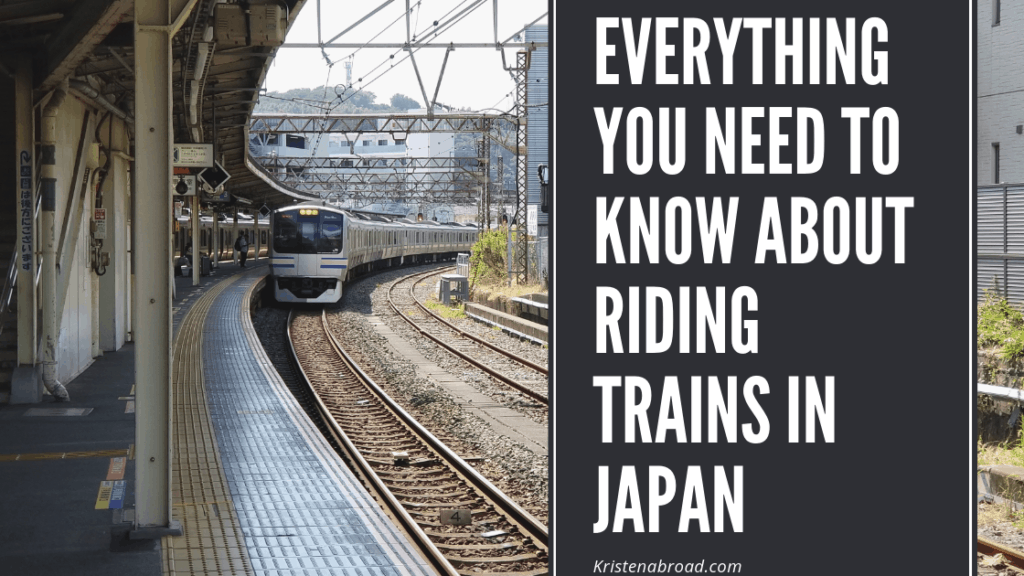
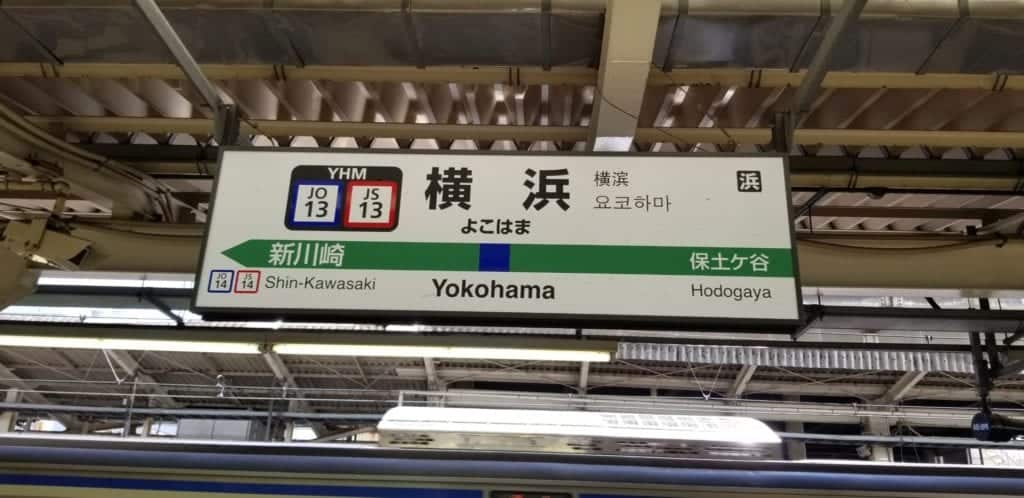

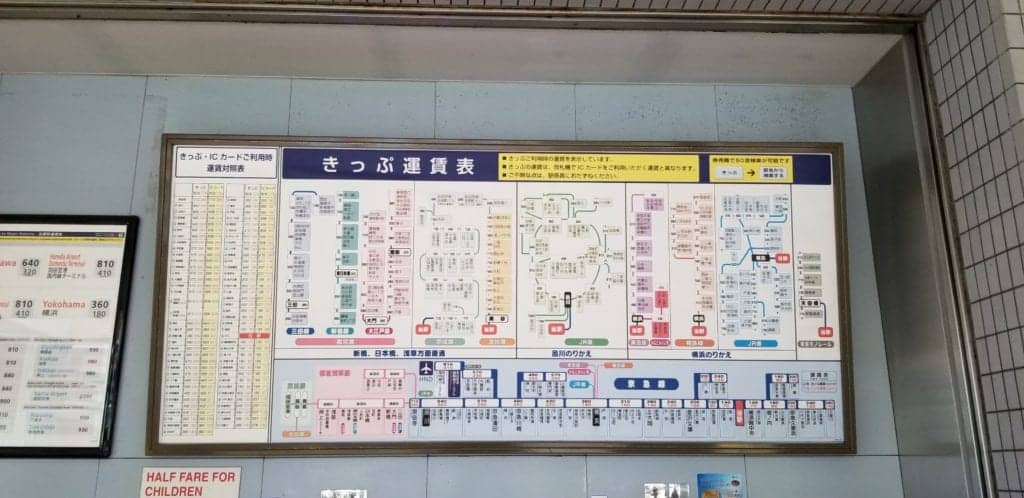
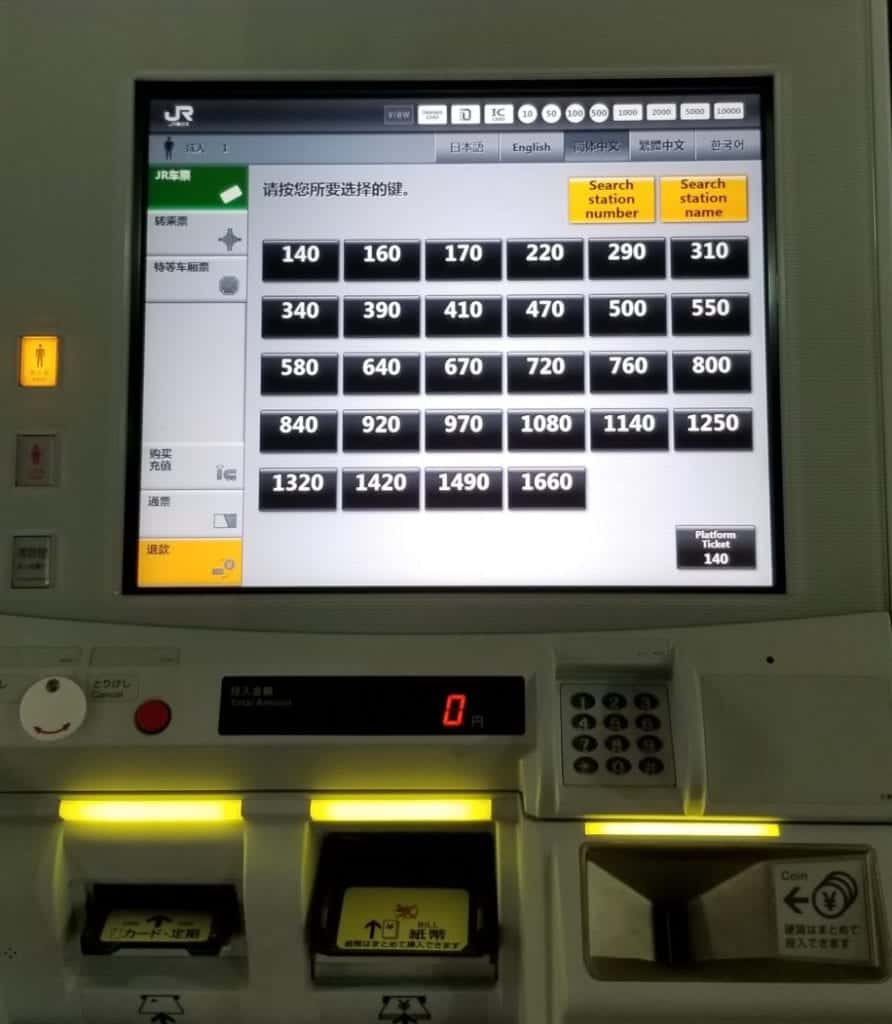
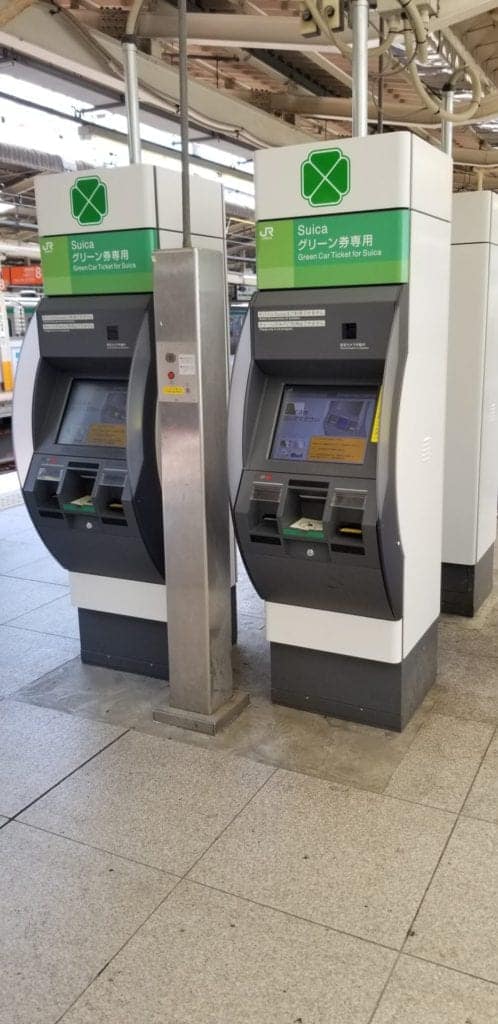
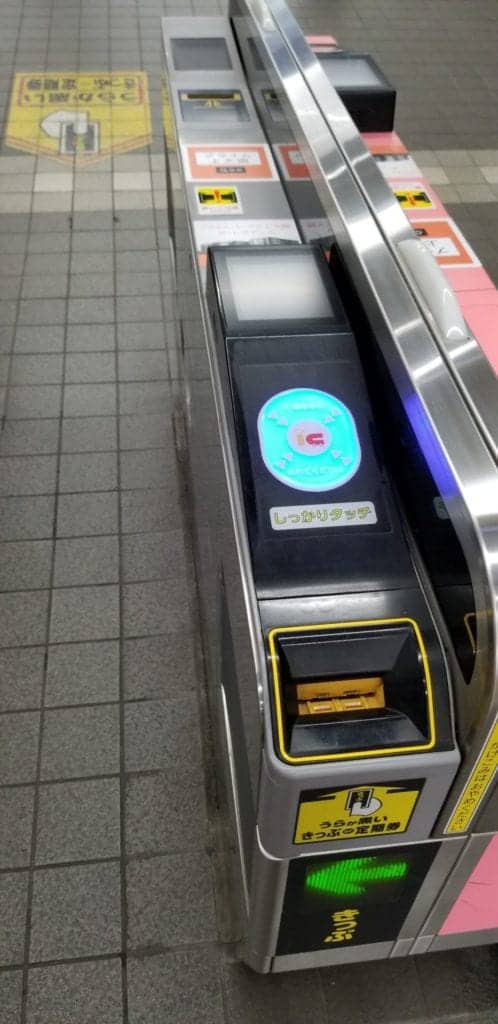
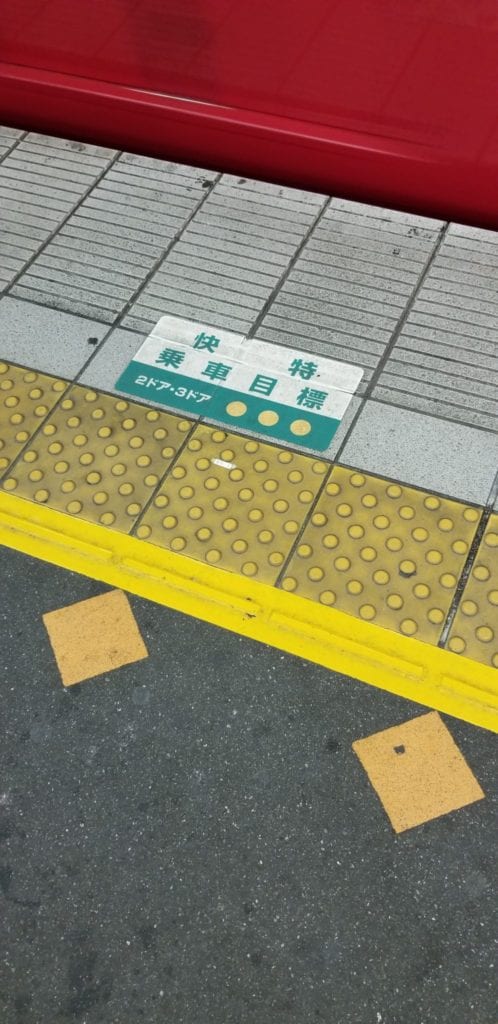

The information you provide is really useful, thank you
I’m glad you can use it!
Nice article, waiting for you next article
Thank you for the compliment 🙂